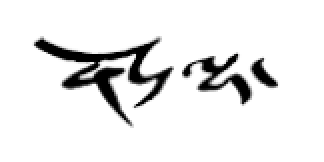Contents > 2. Defense > 2.1. Player-to-Player, 1/4 Court Defense > 2.1.1. On-Ball Defense
2.1.1.1. Phase 1 (Before Dribbling)
(1) Q: How do we defend the offensive player with the ball before they begin dribbling (when the offensive player is in triple threat)?
A: For right now, we are going to focus on our base defensive body positioning, or our defensive stance; this stance allows us to be able to defend the shot, the dribble, and the pass (the triple threat):
Lower Body: It is best if your lower body is very low, with your legs bent. It is best if your hips are always lower than the offensive player’s hips. Your legs are where the majority of your strength and your ability to move laterally comes from. With a lower center of gravity, you will also be able to move quicker. When your body is down low you are an athlete; if your body is up high you are not an athlete (you have no strength in your legs, and cannot move quickly). It’s best if your legs and feet are a little bit wider than your shoulders.
Upper Body: Keep your chest straight with a slight forward bend (with your center of gravity now over your bent legs for balance)
Distance: Generally it’s best to be just over one arm-length away from the offensive player; close enough to put a hand up to contest a shot, but far enough away to be able to guard the dribble drive towards the basket (a balance between the two). This will take some adjusting by the defender, as each person is different.
Body Angle: You want to angle your body to direct the offensive player to the sideline and baseline (away from the middle and the key); if you’re defending near the top of the key, you can angle your body to the corner baseline to begin with. You decide where the offense is going, don’t let the offense decide.
Feet: your inside foot (the one closest to the middle of the court) should be closer to the middle of the court than the offensive player’s inside foot, with the middle of your chest lined up with their inside hip. Be on the balls of your feet, not the heels, so that you can move quicker. Initially point your feet straight forward to be able to move quickly to the left or right.
Hands/Arms: Your inside hand (the one closest to the middle of the court) should be closest to the offensive player; it is ready to contest a shot, a pass to the inside, and dribbling to the inside. You may also swipe at the ball to apply pressure, but be careful of not fouling! Always swipe up to prevent getting a foul (swiping down can lead to a foul). Your outside hand is low in the direction you want the offensive player to go (towards the baseline/sideline), also ready to contest a dribble and pass in that direction. Having this hand lower also provides balance.
Eyes: Look at the middle of the offense player’s chest. If you stare directly at the ball too much, you can be deceived by shot fakes and pass fakes.
(2) Q: What happens if the offensive player shoots or makes a pass?
A: Your inside hand will “mirror the ball”, meaning follow the ball with your hand. This will contest the shot or the pass. Your body must remain low when contesting; you can be a little higher than normal to contest the shot or pass, but do not come out of your defensive stance, become too high, or jump!
(3) Q: What happens if we become too high in our defensive stance or jump to contest the shot or pass?
A: You must remain in position to defend the dribble just in case the offensive player shot fakes or pass fakes and dribble drives. If you jump or become too high in your stance, the offensive player can dribble past you easier, or you can foul them easier (both leading to higher percentage shots). Also, if they do actually shoot you will need to be in good position for the rebound afterwards (which we will talk about later) and if they do actually pass you will need to be in good position to continue playing defense on them (which we will also talk about later).
(this is an example of bad defense; the defender became too high on the shot-fake)
(4) Q: What if the offensive player fake dribble drives (called a jab step)?
A: Do not react too strongly to the jab step (meaning taking too many steps backwards/in the direction of the jab step), or else the offensive player will have more space to come back and shoot, or dribble drive in the other direction. React just enough so you can defend all triple threat options - usually this is a quick step in the direction of the jab step, then quickly returning to the normal position.
(this is an example of not ideal defense; the defender reacts too strongly to the jab step)
SKILLS DRILLS
Skills Drill #1: Defensive Stance
Here is a drill you can do anywhere! Practice getting in a defensive stance, remembering to stay low. If you’d like, have someone come push you, and see if you can stay strong in your stance without moving your feet. Hold this position for 10 seconds.
Skills Drill #2: Defending Triple Threat (with Fakes)
Have an offensive player perform triple threat fake actions (shot fake, pass fake, jab step) with a ball, and the defensive player defend properly. Do this for 10 seconds.















